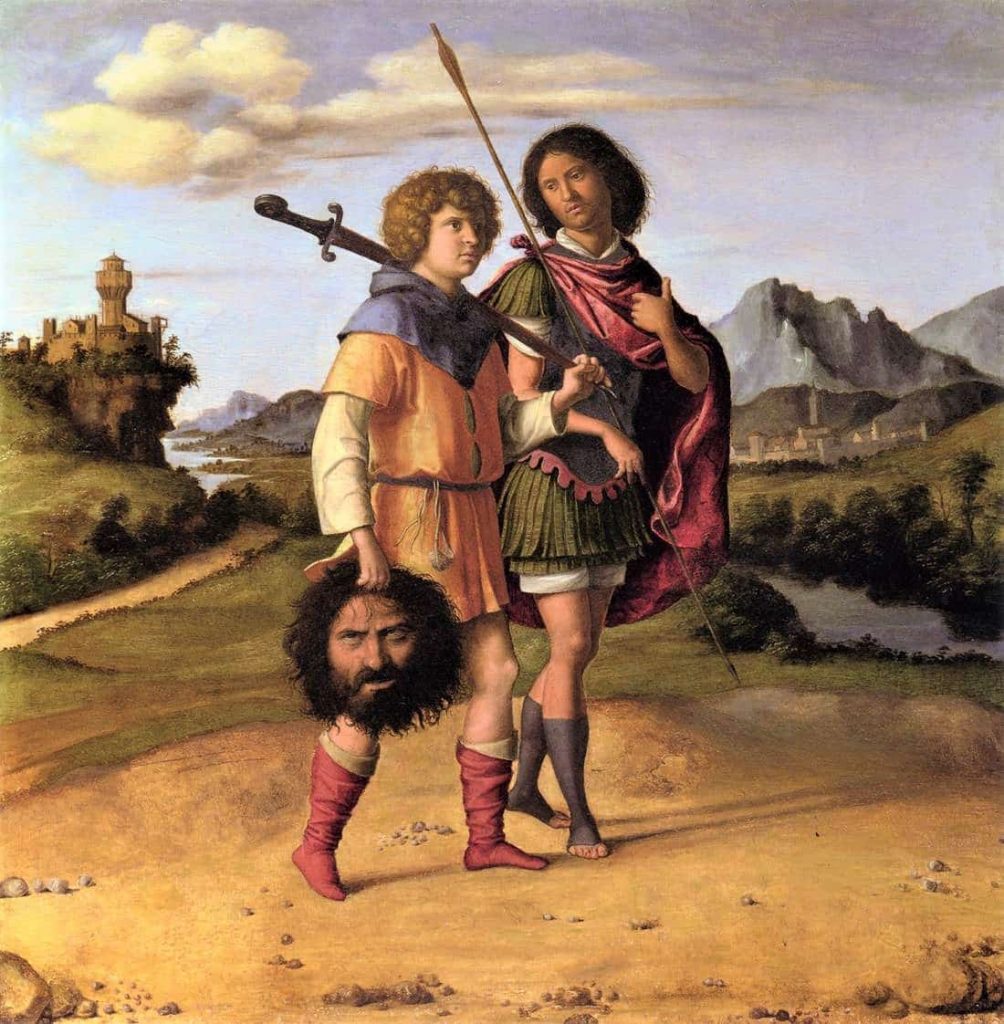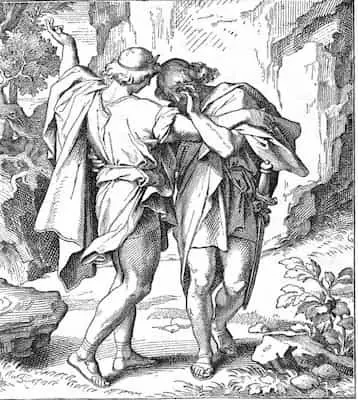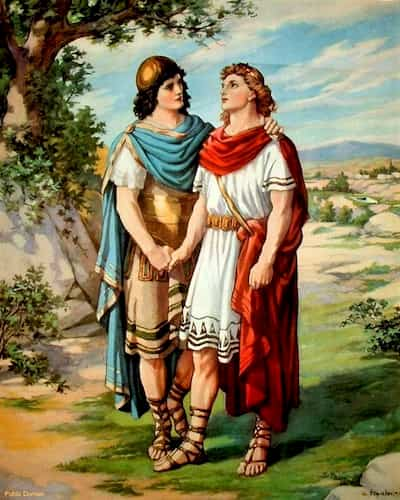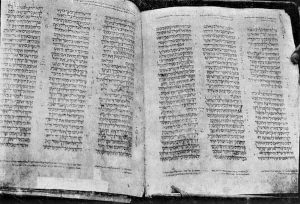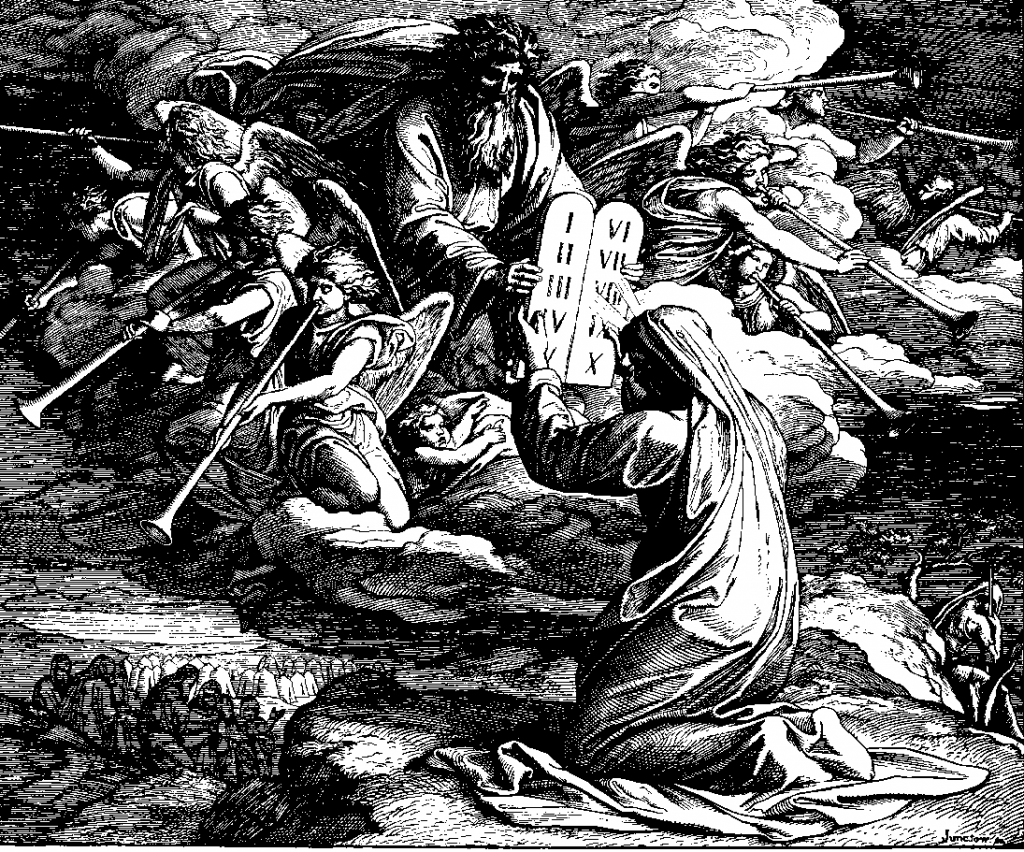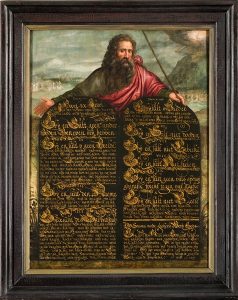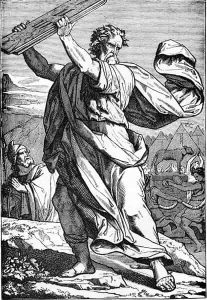Who is Satan? Is he a fallen angel, and does he rule over Hell where he tortures the sinners forever?
Satan, or the Devil, has been many things over the centuries. And his part in the big events has changed drastically. If you are Christian or not, and if you have your own doctrine that tells you who Satan is, it’s still not necessarily true that he always was just that… The Devil has grown and matured.

Disclaimer
As always, discussing the Bible, or any other religious text is a delicate matter. My conclusions are based on facts that are as correct as I can find them. These facts, when it comes to the Bible, very often boil down to believing or not believing that the Bible actually is the unchangeable word of God. And if the Christian beliefs originate from a divine power.
I look at it from a historical, and anthropological point of view… Not from a religious standpoint.
Satan in the old testament
In the old testament, the Devil is a very different character compared to the one we know from modern films, books, and comics. The old texts don’t really describe God as anything that could ever have an opponent. God is the creator of everything and his power reaches every corner of the world, as to every part of the universe.
God in the historical books, is someone who supervises and watches over the Israelites. His main problem is the disobedience of his people. The Israelites constantly walk away from his path. They worship other Gods, they disobey God’s commandments, and they sin in many other ways. God also has a very near relationship with his children. He talks to them, he guides them, and he’s very present in their everyday life.
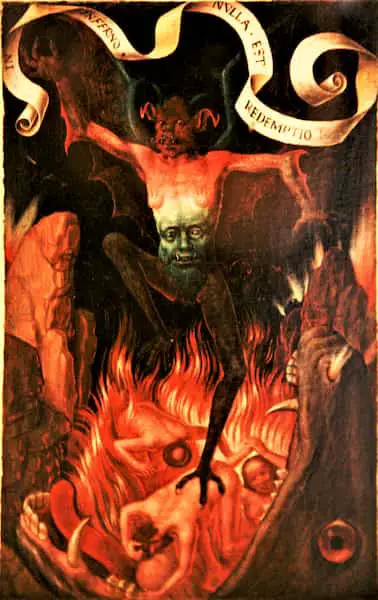 A local God for a Local tribe…
A local God for a Local tribe…
In 2 Kings, 24, the Assyrian King, after having put the Hebrews in captivity, brought men from Babylon, Cithah, Ava, and other places, to repopulate Samaria. There, they were cursed with Lions by the Lord because they didn’t know how to worship him, they couldn’t figure out how… When to burn the sacrifice and how to perform all the other rites. So the King sent an Israelite priest to teach them the traditions of sacrifice and religious life.
It’s obvious that, although almighty and the creator of everything, God was very local. He served one group of people, he was the God of the Israelites. But he also served anyone else who happened to live in Israel and who performed the right rituals.
Gods from other communities, like Baal, and Moloch, were a much bigger threat to God than the Devil, who anyway was under God’s command.
Where the Devil is mentioned in the Old Testament
Satan, the Hebrew word is shtn or shaitan, is mentioned a few times in the Old Testament. The meaning could be, someone who is distant – gone astray, away from the teachings of God.
- 1 Chronicles 21, 1
- Zechariah 3, 1–2
Then we have a few places where other creatures with other names have been attributed to the Devil figure.
Isaiah 14, 12 Here, the word הֵ ילֵ ל (eill) is translated into Lucifer in the Latin Bible. It refers to the King of Babylon, the shining one, as he claimed to be divine. The morning star – Lucifer, light-bearer in Latin. light – lucius. The shining one originally refers to the Canaanite god Athtar.
Ezekiel 28:13-14 This is a lament over the King of Tyrus. Some Christian scholars suggest that it could be a metaphor for the devil.
But the most famous parts of the Devil in the Bible are a bit earlier in the sequence of the books in the Bible.
The book of Job.

This is the only place where Satan is one of the main characters. The word is הַ שָּׂ טָ ן (e·shtn), often translated to the accuser, the adversary. He is still one of God’s creations and does only what God wants him to do. The same word is used many times in the Old Testament with the meaning of adversary without referring to the Devil.
Genesis, where the snake often is interpreted as the Devil. The snake is trying to corrupt the humans, and he could have had his own motifs to do so.
All these are interpretations, and it’s very easy to read the whole Hebrew Bible without encountering the Devil once.
Persian influence.
After the Babylonian captivity, the Persian King Cyrus the Great allowed the Israelites to return to Jerusalem and rebuild the temple. The centuries that followed meant Persian domination as the Achaemenid Empire should turn out to become the greatest empire that ever existed on the face of the earth. The Jews mostly had a good relationship with the Persians and the Hebrew religion opened up to influences from their big brother.
The Persians were Zoroastrians. And in Zoroastrianism dualistic cosmology is fundamental. Their world is a constant struggle between good and evil.
This idea got a foothold in Hebraism and the idea of a dark force, an evil god, started to grow. God should have an enemy, a real adversity.
Satan in the new testament
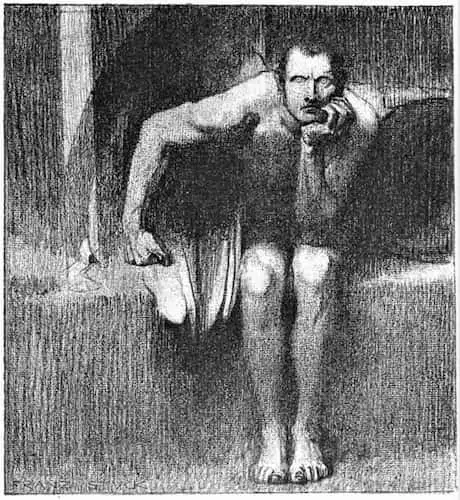
So, in the New Testament, the Devil is much more present and much more of a unique Deity. Jesus casts out demons quite often, and Judah is possessed by Satan himself before his final betrayal. As the New Testament is written in Greek, we have terminology that is closer to English. διάβολος – Diabolos as well as Σατανᾶς – Satanas.
The Devil takes an active role in disturbing the power of God and spreading evil. He tents Jesus in the desert for 40 days before he is finally sent away.
Other examples of the Devil in the new testament:
John 8, 44. Ye are of your father the devil, and the lusts of your father ye will do. He was a murderer from the beginning, and abode not in the truth, because there is no truth in him. When he speaketh a lie, he speaketh of his own: for he is a liar, and the father of it.
Jesus is arguing with the Pharisees and accuses them of doing evil.
Matthew 16, 23. Get thee behind me, Satan: thou art an offense unto me: for thou savourest not the things that be of God, but those that be of men.
Here, Peter is trying to stop Jesus from going into Jerusalem and getting himself killed. So Jesus says, it’s not you but the Devil inside you, who says these words.
Is he called Satan, the Devil, or what?
Satan or the satan (the accuser) is used between 30 and 40 times, more or less the same amount of times as the Greek word Diabolos. Probably the authors wanted to connect to the old books by using the Hebrew noun. Though it’s not always easy to follow all the nominations of the one, or the ones opposing God. They seem many. Beelzebub is another of his names. This one is linked to the Canaanite god, Baal.
In Revelation 20, 2 the author writes, And he laid hold on the dragon, that old serpent, which is the Devil, and Satan, and bound him a thousand years… He uses many attributes to be absolutely certain that nobody could mistake who we are talking about.
Satan in the very last book of the Bible – Revelation.
The last book in the Bible, Revelation, is one of the most difficult texts in the whole scripture. John has a vision and it comes directly from Jesus Christ, and he writes it down exactly as he sees it. If you ever think that the Bible is boring, try Revelation… It’s very entertaining.
Anyway, the vision is that there will be a great war between good and evil, with the evil manifested in all kinds of monsters, dragons, and beasts. Satan fights the angels with his own army of demons. He wins, then he loses, and he’s freed again, but in the end, he’s thrown into the lake of fire. Here’s a Devil that we do not see anywhere else in the Bible. One with soldiers, allies, and friends and they are capable of actually threatening God.
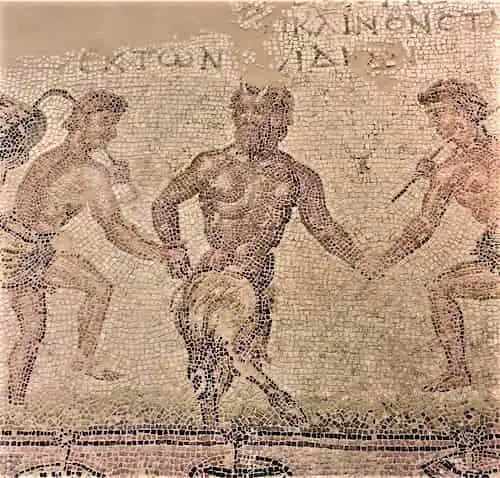
Courtesy of Dimitris Kamaras
Revelation is loosely based on the Book of Enoch, a Hebrew, non-canonical scripture. In the book of Enoch, there are descriptions of fallen angels, demons, and giants, as well as their origins.
The Zoroastrians too had an idea of a great war at the end of times between good and evil.
Satan in the Christian world after the fall of the Roman Empire.
So much for the Bible, but what happened after Christianity had become state religion in Rome in 380 A.D?
The Devil lived on but since God continued to be very powerful, the Devil still had to be his servant. He got a few attributes, like becoming the guardian of Hell. In Revelation, the Devil is cast into the lake of fire, Hell. But later on, he became the guardian, the ruler of Hell. We have Greek mythology to thank for that. Hades is a God who rules the underworld, and he has a pitchfork. The Devil got a trident, like Poseidon. More from Greek mythology is the close relationship with nature, animals, and sexuality. The flute-playing Greek god Pan is a sex-maniac, has horns, fur, and goat hooves.
But it’s difficult to decide from where all these details really emerge. There were lots of pagan gods and lots of vivid imagination among artists and simple people to invent impressive Devils. And we still have to wait until the 14th century to have a Devil as we know him
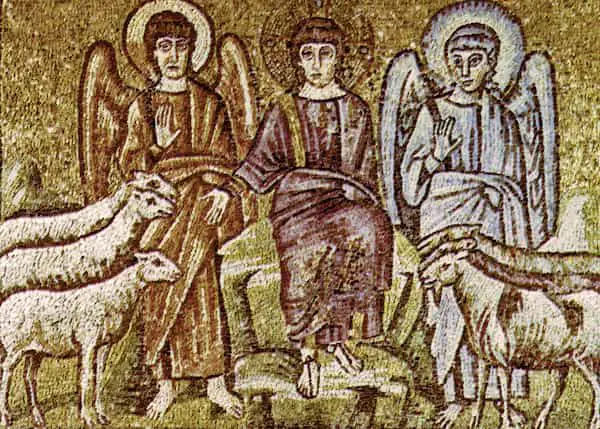
today.
Basilica di Sant’Apollinare Nuovo, Ravenna.
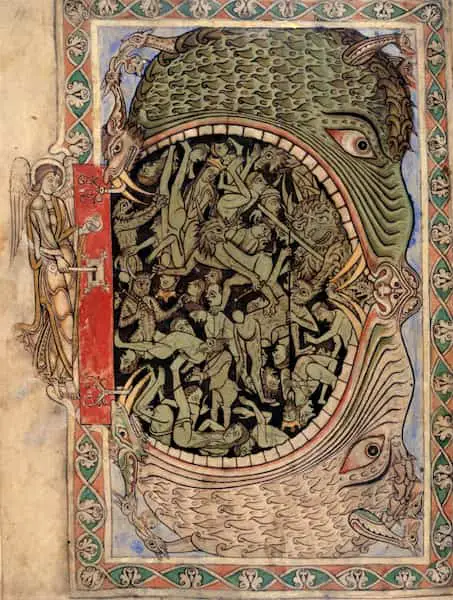
In the first centuries, we still don’t really recognize him at all. In the Basilica in Ravenna in northern Italy, there’s an interesting mosaic. It’s Jesus that divides the good from the bad, the sheep from the goats, as told in Mathew 25, 32. The mosaic is from the 6th century and to his help Christ has two angels. The good angel, who is red, and the fallen angel, the Devil, who is light blue. We would imagine it contrary. The striking fact though, is that the two angels are portrayed as equal, and both are angels of God. Satan is a bureaucrat who is doing God’s dirty work.
Dante’s Inferno
As more time distanced the European church from its origins in Palestine, it became clear that the Devil was an unexploited power. He slowly became more evil, more seductive, and more powerful.
The Winchester Psalter from the mid-1100 has an image where demons torture the sinners behind a door that is closed by an angel. The Devil is Pan-like with body hair, horns, and claws.
In the Baptistery at the Basilica di Santa Maria del Fiore in Florens, we find a Devil who is much more monstrous and sinister. He has horns, snakes coming out of his ears, and he tews and eats the condemned. The mosaic was created by Coppo di Marcovaldo in the mid-13th century.
The Florentine poet Dante Alighieri wrote La Divina Commedia in the first years of 1300 possibly inspired by Apocalyptic literature such as the Apocalypse of Peter. In it the author describes Hell, and it is obvious that apart from scriptures, he was also inspired by the mosaic in the Basilica. His description includes a Devil that eats his victims. He is also in a lake of ice, instead of the usual, hot and flaming place
The Middle Ages and the Renaissance.
The middle ages were a turbulent time. Many new threats had occurred, as Europe had become much more connected, and of course, more divided. The crusades had started. In the 14th century, the Plague arrived, and later on, there was the whole protestant movement to fight. The catholic church needed an ally, and the Devil fitted perfectly into that context. He became the Boogeyman for scaring peasants and burgers.
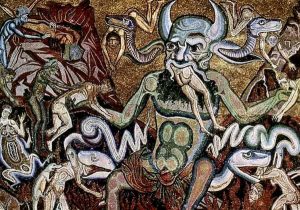
He also explains all the evil in the world, a continuous problem for all monotheistic religions. In the Bible, particularly in the Old Testament, bad things normally happen because we are disobedient to God’s law. With the Devil around, he takes the blame. It’s still important to not let him in though, to not be tented, or persuaded by him. If disasters rise, it’s still because people don’t do right towards God. When the Plague hit the cities in Europe, the only cure they had, was to pray, seek absolution, and build new churches.
Satan is slowly transformed from an Angel or a Dragon, into a deceptive sexually deprived character. A Pan-type demon. And of course, those who were deceived were mostly women…
The Inquisition
During the time of the various Inquisitions, tens of thousands of witches were executed in Europe. Most of them women. Jews, foreigners in general, political or religious opponents, anybody could be burnt without a fair trial. It was mostly people from lower social classes but nobody was safe.
In the 12th century, Henry IV, King of the Holy Roman Empire persuaded his bishops to excommunicate the Pope. The Pope, in turn, excommunicated the King.
King James I and VI of England, Ireland, and Scotland, took his commitment so far as to engage in a full-scale war against Witchcraft. 2.500, mostly women, were accused and burnt.
When Martin Luther nailed his thesis on the door of the church in Wittenberg, he was declared by the Pope, to be working for the Devil. Luther and his followers answered by declaring that the Pope and the whole catholic church were working for the Devil.

Satan had a lot of followers back then.
Satan in modern times
The picture of the Devil from the middle ages has more or less lived on till modern times. The reddish big guy with horns, goat feet, a tail, fur, and a trident, is familiar to all of us. As is his deceptiveness. Al Pacino in Devil’s Advocate is a nice, well-dressed, smooth-talking gentleman. Jack Nicholson in The Witches of Eastwick is a sexually tireless and handsome lover. The idea of evil behind every smiling face is the same as the reason why any beautiful, young girl willing to help a neighbor in need could get burnt as a witch back in 1300.
It is our fear of being deceived.
Conclusion
The Devil is a universal threat to God’s divine plan. He is an evil, persuasive, deceitful, misleading bloke who does everything in his power to corrupt us all. He is the boss over all the demons, and he is the ruler of the underworld, hell.
But he wasn’t born that way. He got all these characteristics only in the last 6-700 years of existence. Before that, he was more of a bureaucrat in God’s great universe… The one dealing with sinners and their punishment.
Yes, The Devil is the evil force opposing God. But he wasn’t born that way. We, the humans, wanted him like that, and he just complied with it.
sources
- scripture4all
- BibbiaEDU
- King James Bible
- The Southern Baptist Theological Seminary / Peter J. Gentry
- National Geographics / The hellish history of the devil: Satan in the Middle Ages
- Wikipedia / Book of Enoch
- All About Venice / Venice’ history III
- Bizanzioit / Sant’Apollinare nuovo
- History / History of witches
- History / The Devil
